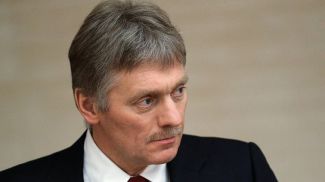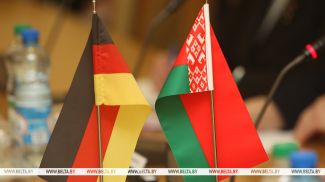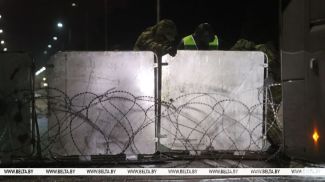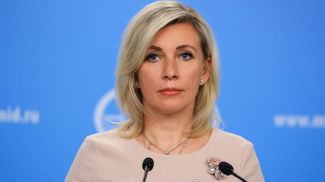In an interview with Polish former judge Tomasz Szmydt, Tigran Meloyan, an analyst with the Mediterranean Studies Center at the Higher School of Economics, spoke about the importance of the Baltic Sea, the Black Sea and Northern directions for NATO, the NATO build-up and its strategy towards Russia. The analyst also talked about the steps Russia and Belarus have been taking to counter the increased military threats and gave his take on what to expect in the future.
Since 2014-2016, the Baltic Sea and the Black Sea have been the regions of increased militarization. The number of military facilities, logistics hubs has increased near the borders of Russia and Belarus, and now almost a hundred thousand NATO troops are stationed there. What measures are Russia and Belarus taking in this regard within the framework of the Union State?
As for the Baltic Sea-Black Sea line of contact, the Republic of Belarus remains the only ally of Moscow, which does not allow the Baltic Sea and the Black Sea flanks to close to "cordon" Russia off. Ukraine and Moldova are in the process of active integration into this cordon. For a long period, Russia was on the defensive, not taking any retaliatory measures to NATO's unfriendly steps, including the transformation of Ukraine into an anti-Russian outpost. However, 2014 was a turning point in the foreign policy of Russia. Russia was forced to switch to offensive actions, initially manifested in the return of Crimea, and then the Donetsk and Lugansk People's Republics in 2022. In the course of the new operational situation, Zaporozhye Oblast and Kherson Oblast were incorporated too.
In 2023, at the request of President Aleksandr Lukashenko, Russia deployed its tactical nuclear weapons (TNW) on the territory of Belarus, which became an important strategic response to NATO's actions near the borders of Belarus. The decision to depart from the principle of non-deploying nuclear weapons on the territory of non-nuclear states was also influenced by the lack of any progress on the U.S. TNW in Europe and the growing tensions in the relations between Russia and the West. We can talk a lot about how this will affect the security of neighboring countries, in particular Poland. But the additional factor has come into play and it will have to be taken into consideration as new security architecture in Europe takes shape.
At the moment, the Union State is the most significant integration project in the Baltic Sea-Black Sea region, representing an alternative to centrifugal forces in the region. Over the 25 years since the Union State was set up, Belarus and Russia have developed an extensive legal framework for military and political cooperation. The two countries maintain a high level of integration in defense, share the same understanding of security problems and mechanisms for ensuring it. This is manifested in the Military Doctrine of the Union State. In addition, there is a joint regional task force within the framework of the Union State and a common air defense system. Russia operates two military facilities in Belarus: the 43rd zonal communications center of the Russian Navy in Vileika and the 474th independent radio-technical unit Baranovichi, with the Volga-type radar. The parties regularly hold joint military exercises to enhance the interoperability of the Union State Armed Forces. These include Zapad, Slavic Brotherhood, Union Resolve, and other military exercises. The Union State recent exercises have been almost symmetrical to NATO's activities that envisaged deployment of certified nuclear weapon carriers near the borders of Belarus. They included both tactical aviation (F-16 fighters) and strategic bombers.
What is Russia's strategy in response to the West's unfriendly moves?
In addition to Russia’s first-ever deployment of tactical nuclear weapons outside its borders, Moscow is actively working to boost military capabilities on its southern and northwestern borders.
Over the past ten years, Russia has built up the capabilities of the Southern Military District and the Black Sea Fleet. In 2014, four mechanized divisions were set up in the Southern Military District to replace the brigades. The move to build up the Southern Military District was meant to make Crimea more secure and impregnable to the enemy. Air and coastal defense means were gradually deployed to the peninsula. The Bastion coastal defense systems were deployed in 2015 and later reinforced with Onyx supersonic anti-ship missiles with a range of 350km and supplemented with Bal coastal missile systems with a range of up to 120km. The area of operation of these missile systems, compared to their previous positions in Krasnodar, made it possible to extend the zone of control to almost the entire air and water space of the Black Sea, thus posing a threat to NATO ships. In 2018, a second division of S-400 Triumf was deployed to Crimea, expanding the range of Russian air defense in the Black Sea region to 400km. Finally, by 2020, Crimea was equipped with all necessary electronic warfare capabilities to take the Black Sea region under full control and turn it into an anti-access and area denial region (A2AD).
Russia also strengthened its capabilities in Kaliningrad Oblast, primarily with the help of various types of long-range weapons - Iskander-M launchers, the Bastion coastal missile system, the Kinzhal hypersonic missile system carriers, S-400 SAM systems, and Kalibr cruise missiles. Some of these weapons are capable of posing a counter threat far beyond the neighboring countries within the Baltic Sea-Black Sea area.
The Western Military District has been reorganized into two new strategic territorial associations of the Russian Armed Forces - the Moscow Military District and the Leningrad Military Districts. The move is expected to contribute to the efficient management of the Russian troops and help respond quickly to threats, given the rapidly changing situation near the Russian borders. After the re-institution of the two districts, the Leningrad Military District will be equipped to counter threats from Finland, Sweden, and the Baltic States, and the Moscow Military District – those from Ukraine. Moreover, according to Decree No.141 “On the Military Administrative Division of the Russian Federation” signed by the Russian president, the Donetsk People's Republic, the Lugansk People's Republic, Zaporozhye Oblast and Kherson Oblast were added to the Southern Military District. The Black Sea and the eastern Mediterranean region fall within the remit of the district.
Let's also recall the biggest news of the week: Russian President Vladimir Putin signed a decree to increase the total authorized strength of the Russian Armed Forces to 2,389,130 people. In fact, this decree is aimed to staff units in the newly created military districts.
And, finally, the update of the nuclear doctrine of the Russian Federation. The updated version proposes that aggression against Russia by any non-nuclear state, but with the participation or support of a nuclear state, be considered as their joint attack on the Russian Federation.
It was also stated that Russia reserves right to use nuclear weapons if Belarus is attacked. This clause is to be spelled out in the Treaty on Security Guarantees between Russia and Belarus expected to be signed ahead of the 25th anniversary of the Union State.
The threshold for the use of nuclear weapons has been lowered, which, in theory, should help restore the fear that the enemies have lost. In many ways, all this was a forced response to threats to use Western weapons for strikes deep inside Russia and the increased frequency of NATO exercises near the Belarusian borders.
How will things move on?
Russia will continue offensive operations and expansion of military and political control in Ukraine. No doubt about this. Such is the current operational situation, especially given the debates in NATO countries to allow Ukraine to use long-range weapons systems to strike Russian territory. The best Russian response to this will be creating counter-threats to European countries, for example, near the mouth of the Danube and in the Carpathian Mountains. In other words, the Danube and Carpathians in response to the Gulf of Finland and Kaliningrad.
I would like to point out that the NATO build-up, including long-range missiles, near Russia's borders does not contribute to strengthening the alliance's security, as it is commonly believed. On the one hand, such actions force Russia to react. On the other hand, it is particularly threatening that even regionally deployed NATO forces and means have the ability to strike at Russian strategic targets, which can trigger a nuclear conflict.
Does this suggest that a conflict between Russia and NATO is inevitable in the medium term? Nothing can be ruled out amid the extreme distrust and mutual dislike, but we should not exaggerate this possibility. As we can see over the past two years, NATO's goal has been not to engage in a direct conflict with Russia, but to create constant threats to its borders and its existence, including through hybrid methods. NATO's strategy is to close the Baltic and Black Sea flanks of the cordon and then move toward the South Caucasus and form a full-fledged Baltic-Black Sea arc to deter Russia. To be more precise – to block Russia on sea and land and gradually increase its isolation.
In the future, the West will be working hard to bring this plan to fruition. We can predict, among other things, an unhealthy interest of the Western countries in Belarus' internal political situation, especially in the run-up to the 2025 presidential election. The current leadership of Georgia and pro-Russian and centrist parties of Moldova are facing a similar pressure as the countries are approaching the parliamentary and presidential elections, respectively, that are due in October this year.













